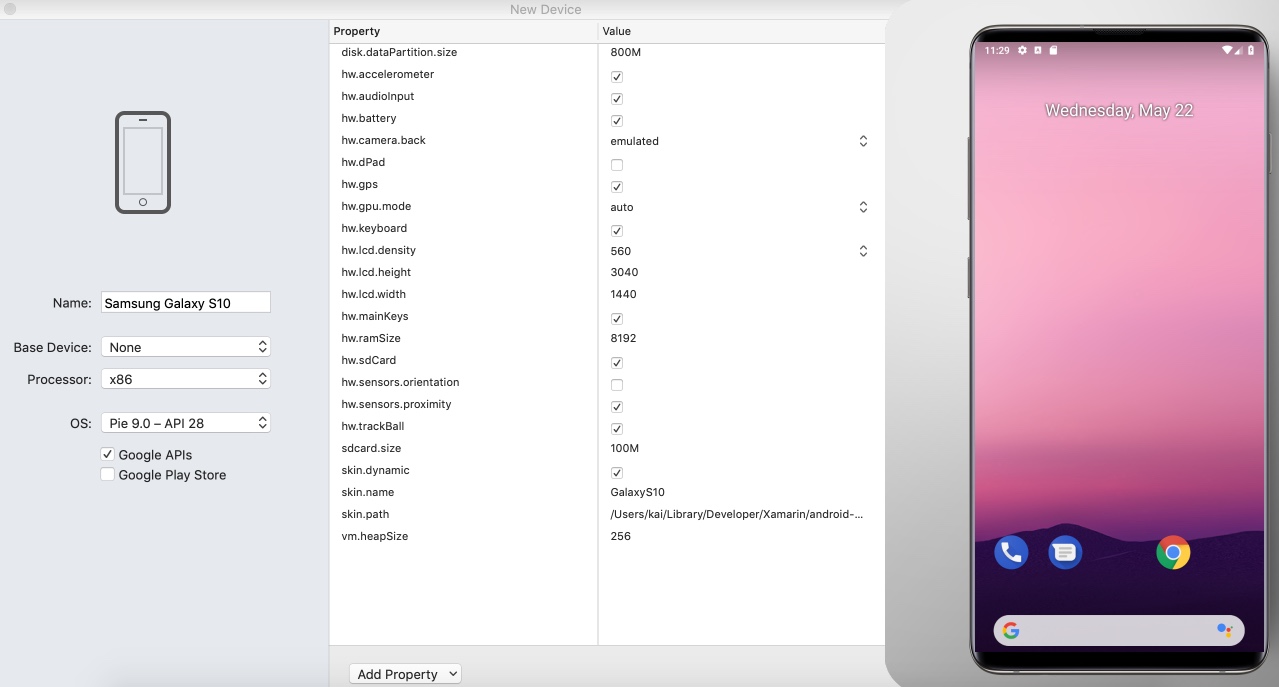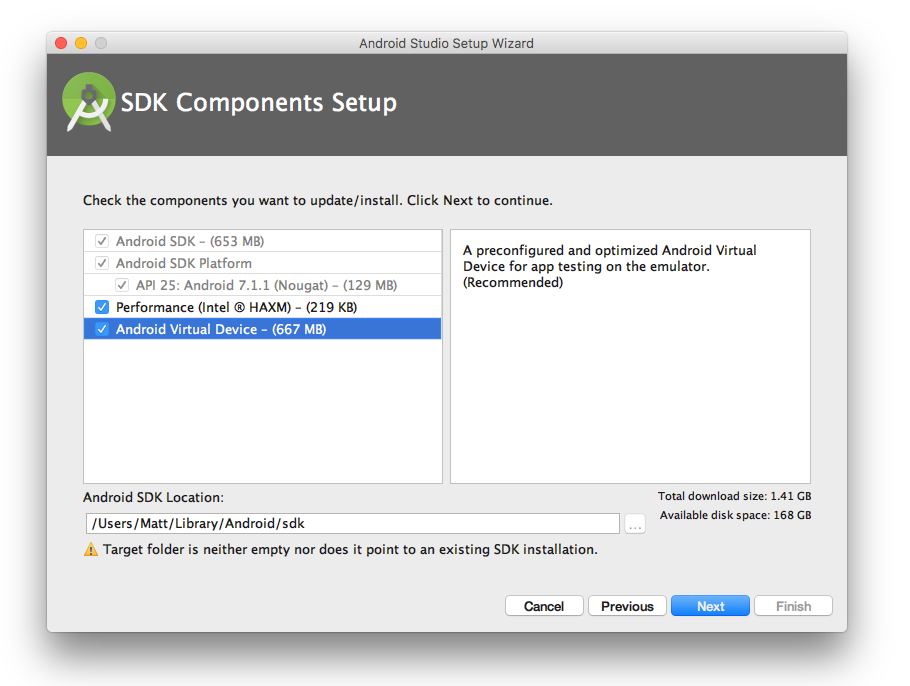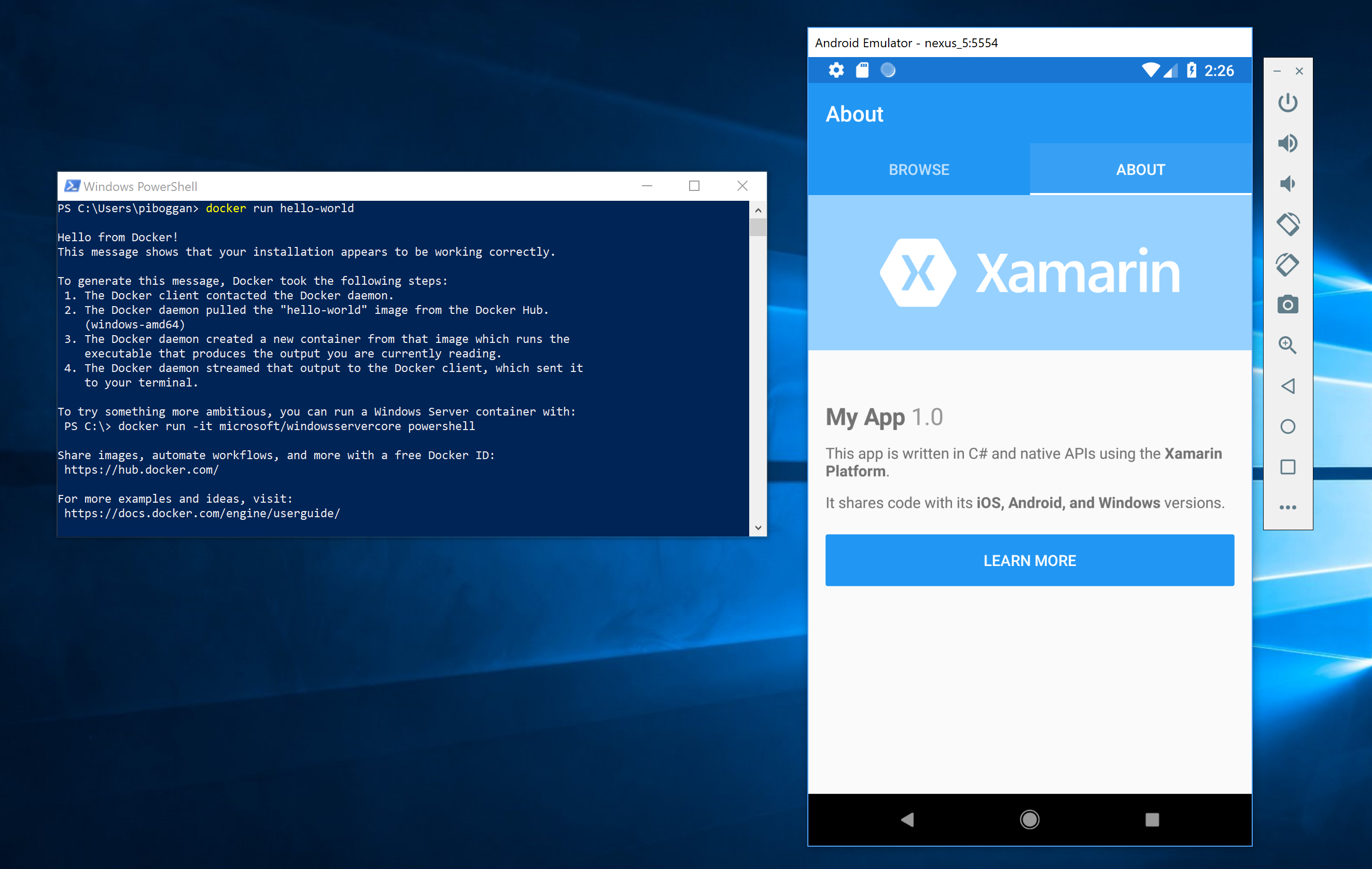

- Android studio mac setup emulator 720p#
- Android studio mac setup emulator install#
- Android studio mac setup emulator android#
- Android studio mac setup emulator software#
Android studio mac setup emulator android#
Android Virtual Device Manager – Things to NoteĪVD Manager lets you set up and configure your virtual Android devices.Once you’re done with the installation, you’ll arrive at the Android Virtual Device (AVD) Manager:

Android studio mac setup emulator 720p#
If you want to work with Android 8.1 or above, you’ll need a webcam that can capture 720p frames. In order to work with Android emulator, you’ll need SDK version 26.1.1 or above and a PC/laptop with 64 or 86-bit processor. The Android emulator can be tricky to set up.
Android studio mac setup emulator install#
Check the box and click OK to install it. Within this screen, under the ‘SDK Tools’ tab, you’ll find the Android Emulator. To install it from your Android Developer Studio console, go to Configure -> SDK Manager -> Android SDK. Post the release of version 25.3.0, the Android Emulator is distributed separately from Android SDK tools. Now that you know how it works, here’s a brief introduction to the most popular Android emulator out there.Īndroid Emulator (by Android Developer Studio) With hardware-acceleration, the Android emulator can run virtual devices at speeds similar to that of your workstation CPU. If your CPU supports it, the Android emulator prompts you to enable or install the hypervisor in order to speed up virtual device performance. X86 Android ABIs (Application Binary Interface, or system images) are now available to support hardware-acceleration on most computers. There’s KVM (Kernel-based Virtual Machine) for Linux. Intel’s HAXM (Hardware Acceleration Execution Manager) is a hypervisor component for Windows and macOS. This is called hardware-assisted virtualization. How it works: When the guest and the host devices have same instruction architecture (say, x86 Android system images and x86 Intel processor), QEMU skips the ‘binary translation’ part and runs the guest device directly on the host CPU. With the release of version 25.3.0, Developer Studio upgraded their emulator to support hardware-assisted virtualization. Thankfully, it can be skipped if the guest and the host CPU architectures are the same, with the help of a hypervisor.īefore 2017, Android Developer Studio’s emulator had to translate Android’s ARM architecture to match the Intel/AMD architectures commonly used in PCs. The translation of CPU architectures is a complex, time-consuming process which makes emulation almost painfully slow. You equip this with with an OS and run it like a program on your computer. Then it translates the Application Binary Interface (ABI) of the guest device to match that of the host device.

How it Works: It mimics guest device hardware. QEMU powers most Android emulators (including the one by Android Developer Studio). It can run on a large variety of host (workstation) CPUs/OSs and emulate an even larger range of guest CPUs/OSs. It’s an open-source and incredibly versatile tool.
Android studio mac setup emulator software#
Complete platform-virtualization (hardware and software emulation) is possible with Quick Emulator (QEMU).


 0 kommentar(er)
0 kommentar(er)
